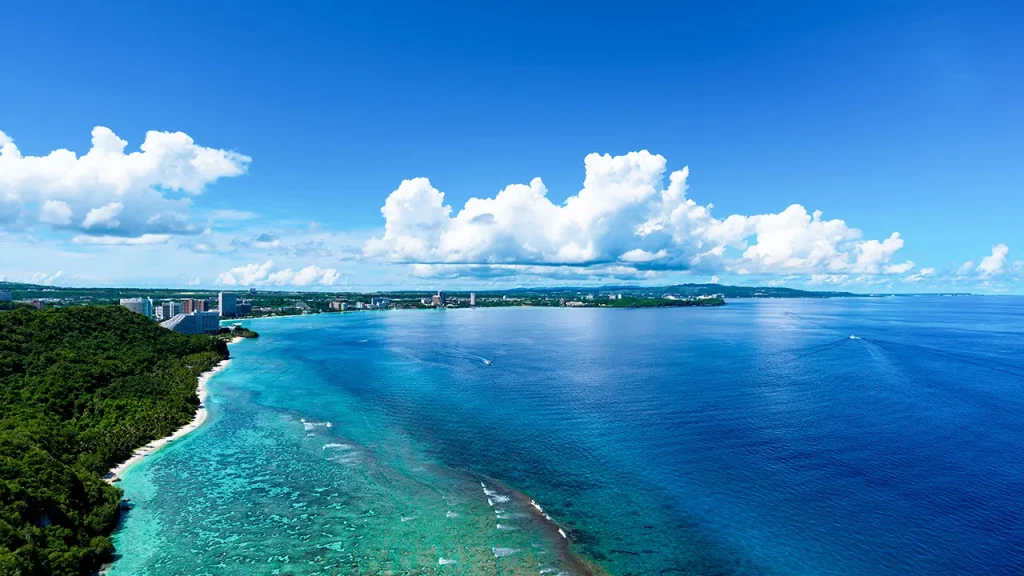A recent federal case in the United States has highlighted the ongoing challenges of human smuggling, particularly through U.S. territories like Guam. A Chinese national, identified as Zhongli Pang, has been sentenced for attempting to transport illegal migrants using an obscure loophole in immigration laws. The situation underscores growing concerns about the illegal movement of people and the increased scrutiny from authorities aimed at curbing such activities.
| Article Subheadings |
|---|
| 1) The Case of Zhongli Pang: An Overview |
| 2) Legal Implications of Exploiting Immigration Loopholes |
| 3) The Role of Homeland Security Investigations |
| 4) The Broader Context of Illegal Immigration in Guam |
| 5) Future Steps in Controlling Illegal Migration |
The Case of Zhongli Pang: An Overview
In June 2024, Zhongli Pang, aged 36, was arrested for attempting to smuggle 12 Chinese nationals into Guam. Pang had procured a vessel for $33,000 and intended to navigate approximately 100 miles from the Northern Mariana Islands to Guam. The plan quickly unraveled due to his limited boating experience; the overloaded boat ran out of fuel and required a rescue from the U.S. Coast Guard. In a subsequent plea deal, Pang pleaded guilty to conspiracy charges related to transporting illegal aliens and defrauding the United States. On Tuesday, he was sentenced to three months in federal prison, with some time already served, along with a requirement to complete 50 hours of community service.
Legal Implications of Exploiting Immigration Loopholes
The case of Zhongli Pang casts a spotlight on the legal ramifications surrounding immigration loopholes. Pang tried to exploit a lesser-known provision that allowed Chinese visitors to travel to the Northern Mariana Islands without a visa, utilizing this pathway to smuggle individuals into Guam, where a U.S. visa is mandatory. This tactic underscores the risks and illegalities associated with circumventing immigration laws; the outcome serves as a warning to others attempting similar actions. U.S. Attorney Shawn Anderson emphasized the seriousness of such offenses, stating that illegal travel poses substantial risks not just to the migrants but also to law enforcement and local communities.
The Role of Homeland Security Investigations
Homeland Security Investigations (HSI) has been instrumental in cracking down on illegal immigration through U.S. territories. Special Agent in Charge Lucy Cabral-DeArmas highlighted the importance of combating the “dangerous and unlawful movement of illegal aliens.” This case is seen as part of a larger effort to deter criminal activities linked to human smuggling in the region. In 2023, HSI launched the Mariana Islands Border Enforcement Security Task Force, aimed at addressing the vulnerabilities inherent in the region’s geographic proximity to Asia. Through continuous partnerships with local authorities, HSI aims to ensure the safety of communities and prevent future violations through their rigorous enforcement strategies.
The Broader Context of Illegal Immigration in Guam
Guam has increasingly become a focal point for illegal immigration, not only due to its geographical location but also because of the complexities in immigration laws that some exploit. The U.S. territory’s connection to the Northern Mariana Islands presents unique challenges in regulating the flow of migrants. The situation with Zhongli Pang is part of a worrying trend, as authorities report a rising number of illegal Chinese migrants attempting to enter the U.S. via these territories. Public officials have voiced concerns regarding this issue, urging for more stringent laws and better enforcement protocols to mitigate risks associated with illegal immigration.
Future Steps in Controlling Illegal Migration
Looking ahead, U.S. officials are implementing more comprehensive measures to reinforce border security and reduce illegal migration through U.S. territories. Enhanced enforcement efforts are planned, particularly directed at illegal travel between the Commonwealth of the Northern Mariana Islands (CNMI) and Guam. Federal authorities strongly advise all nationals, particularly those from the People’s Republic of China, to comply with local laws and programs. As emphasized by U.S. Attorney Shawn Anderson, future enforcement actions will focus on apprehending individuals attempting to evade detection, thereby safeguarding the communities affected by these issues.
| No. | Key Points |
|---|---|
| 1 | Zhongli Pang was sentenced for attempting to transport illegal migrants from the Northern Mariana Islands to Guam. |
| 2 | The case illustrates the risks involved in exploiting immigration loopholes. |
| 3 | HSI is actively working to combat human smuggling and illegal immigration in U.S. territories. |
| 4 | There is a growing concern regarding illegal migration through Guam, making it a significant issue for local authorities. |
| 5 | Future enforcement measures are being implemented to improve security against illegal immigration. |
Summary
The case involving Zhongli Pang serves as a significant reminder of the ongoing challenges posed by illegal immigration through U.S. territories. The sentencing not only reflects the legal repercussions of such actions but also highlights the broader implications for law enforcement and community safety. As U.S. authorities step up their efforts to curb illegal migration, the complexities of immigration law and loopholes will remain a critical area for scrutiny and action.
Frequently Asked Questions
Question: What was the primary action taken by Zhongli Pang?
Zhongli Pang attempted to transport 12 illegal Chinese migrants from the Northern Mariana Islands to Guam using an unregistered vessel.
Question: What enforcement measures are being put in place to tackle illegal immigration?
Federal authorities are implementing heightened enforcement strategies, including the establishment of a Border Enforcement Security Task Force focused on combating illegal migration through U.S. territories.
Question: Why is Guam considered a point of entry for illegal migrants?
Guam’s geographic location and its connection to the Northern Mariana Islands create vulnerabilities that some illegal migrants exploit to enter the U.S. without proper documentation.


